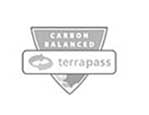Misinformation can stop people from taking good actions to save energy and money. You may have heard some of these yourself. Certainly, if you have questions beyond what is here, we’re here to help you be successful. Give us a call toll free at 800-516-0949
Myth #1: Spray foam under a roof voids shingle warranties.
Truth: ANY form of insulation directly under a roof sheething potentially would void a shingle warranty if that brand has that stipulation. The higher the quality of shingles, the less likely the warranty gets voided for insulation under the sheething.
Myth #2: Open cell foam is better for under a roof because it shows leaks.
Truth: Yikes -- where to begin. First off, make sure any known leaks have been fixed before insulating. Don’t use any spray foam to fix a roof leak.
Next -- open cell foam is like a sponge. It readily absorbs water. So, if there is even a small leak, open cell foam would absorb and spread that water out and across the roof, causing a lot of damage. Closed cell foam doesn’t absorb water, so it would resist a small leak for a lot longer, and then would show the leak faster inside the attic without first having spread it across the whole roof deck.
Myth #3: It’s better to spray overhead if you have something already on the floor.
Truth: We hear this a lot from clients -- that spray foam contractors tell them this. To a contractor, it is easier…for THEM! It’s not their home, so of course they’ll sell you on less work for them and more money for volume of product sprayed overhead. But that’s often not what’s best for the house, and by extension, it’s owner and the people who live in it.
Unless you are intentionally turning your attic into a living space or the house is in an area of the country that is fire* or hurricane** prone (California or the South East), the floor is best for most of us. Heck, that’s why there’s insulation already on the floor…that’s where it was intended to go when the house was built. But, most homes have fiberglass or blown in cellulose on the floor and that doesn’t cut it anymore because it doesn’t seal out airflow.
Do it right -- remove what’s already on the floor. Inspect what you’re removing for potential re-use. Spray down 1 inch of closed cell Foam it Green and then pile batts back on top (new if the stuff you pulled up was garbage). Do NOT seal over that old stuff…that will cause mold issues down the road.
*Fire prone areas often opt for sealing soffit vents (and therefore ridge vents) because during fire season, the roof is what catches on fire as the circulating air in the attic is what draws in the fire.
**Hurricane prone areas often seal soffit and ridge vents to avoid strong gusts of wind whipping up through the vents and tearing roofs off houses.
Myth #4: You can pile insulation on E84 Rated Canned Lights.
Truth: It is a good idea (and code regulation) to have E84 Fire Retardant Canned Lights, but you still should never put any form of insulation directly to a canned light. Use canned light covers to provide air and space to your canned lights. Then, seal the canned light covers down to the floor of the attic so air doesn’t escape through the holes cut in the ceiling to fit the canned lights.
Got a different question or myth you want to talk more about? Call us! 800-516-0949










